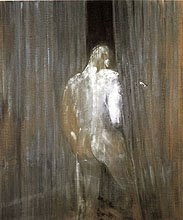The dust has fallen. The rock's unbroken
The dust has fallen. The rock's unbroken face has been defaced into faces, various and beautiful instead of being one and true. If anything is true, this is true: we love all that are not unbroken, for they bore the brunt of beautiful blows, reflected in our scarred faces. The city, from this hill, has many faces in its glass, neither good nor true, but multitudinously beautiful, quickening, twinkling in the broken light falling like hail, broken faces so beautiful and so untrue.



